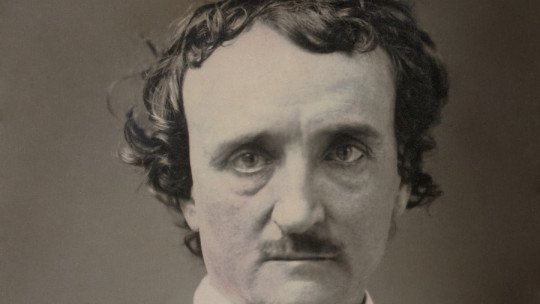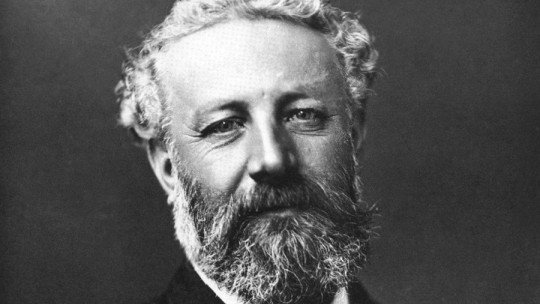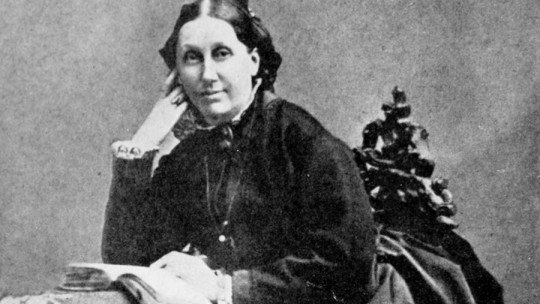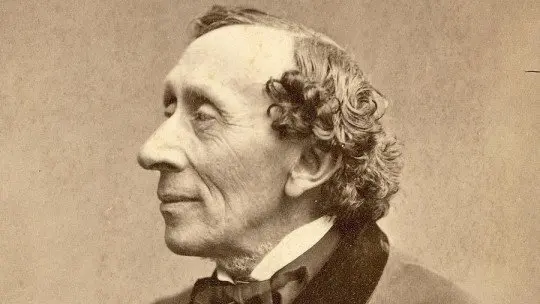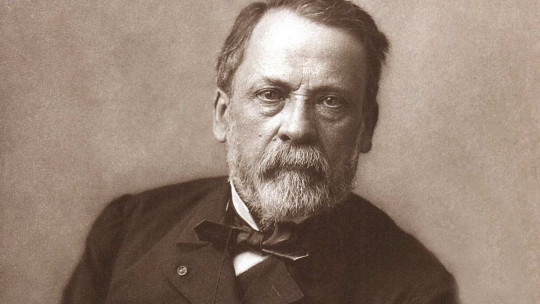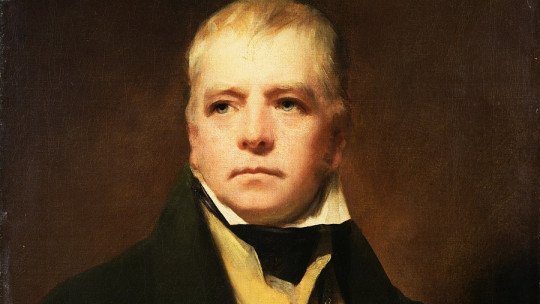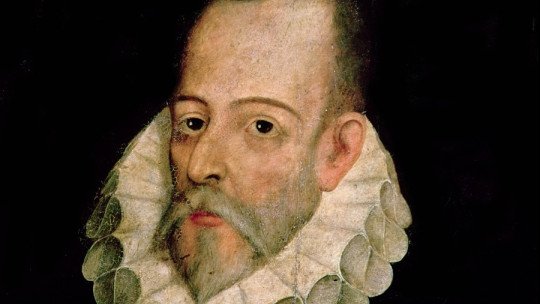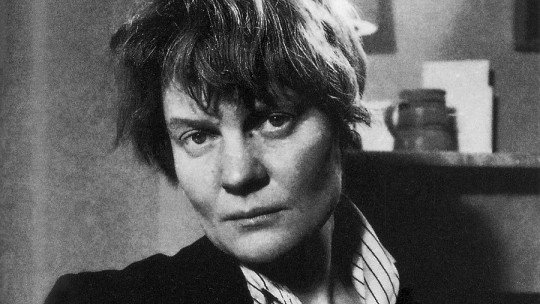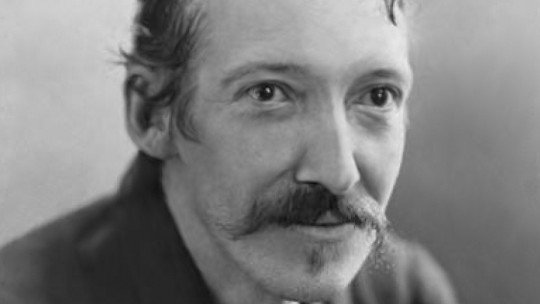
They say that the chilling story of Jekyll, the doctor obsessed with the human psyche, and Hyde, his hidden monster, occurred to Robert Louis Stevenson one cold and terrible winter night, when, gripped by fever, he had disturbing nightmares. The year was 1885; Stevenson was already an established author thanks to his Treasure Island, the adventure novel that had launched him to fame just two years earlier.
The tuberculosis that the writer had suffered from his earliest youth was the cause of his alarming physical decline. In fact, he would only live nine more years: he left this world in December 1894, when he had just turned forty-four years old. Of course, he left behind a universe of horror and fantasy that would delight children and adults and that would elevate him to the top of universal literature.
Brief biography of Robert Louis Stevenson, the author of Doctor Jekyll and Mr. Hyde
Although his love for writing dates back to his childhood, Stevenson was not always clear that he wanted to dedicate himself to literature. He first tried to follow in his father’s footsteps and become an engineer; Then, when he saw that this did not satisfy him, he embarked on a career in law.
He graduated in 1876, but never practiced. Literature burned in his veins especially since his father paid for a modest edition of his first work, Pentland Rising, just to satisfy your teenager’s desires. It was a short novel of just 22 pages, written in the purest style of Sir Walter Scott, the other great illustrious Scot. Robert Louis Stevenson still had a long way to go.
The Edinburgh boy who read Walter Scott
Robert Louis Stevenson was born in the capital of Scotland in a cold November 1850. His parents, Thomas and Margaret Stevenson, belonged to a modest bourgeois class, since Thomas was a lawyer and engineer specialized in the construction of lighthouses. Robert was his only child, so the family wanted her to follow in his father’s footsteps. However, little Robert’s literary concerns suggested that his destiny would be very different.
Despite his penchant for letters, young Stevenson bows to his father’s desire and enrolls in university to study engineering. He soon realizes that this is not his path, and he then opts for a career in law, apparently closer to his vocation. In 1876 he managed to finish it, but he would never practice law. In fact, he will not be able to financially part with his father until he reaps his first (tremendous) success with his fantastic adventure novel. The island of the treasure (1883).
Like most of his contemporaries, Robert adored Sir Walter Scott, the other great Scotsman of international reach Attracted by his historical novels (Ivanhoe, Rob Roy, The pirate), at the age of sixteen, an adolescent Stevenson sets out to emulate his hero and writes his first work. We have already mentioned that the little book had only 22 pages and that his father covered the costs of publishing one hundred copies just to please her son.
An incipient tuberculosis
What Thomas Stevenson could not suspect is that this was only the first seed. A seed that, over time, would bear abundant fruit and put the name of his son on par with that of Scott, so admired by him. For now, Young Stevenson is a twenty-six-year-old boy fresh out of college who does not want to work as a lawyer Not only that; For some years now he has been suffering from incipient tuberculosis, which the damp and cold climate of Edinburgh only worsens. Doctors therefore recommend that you travel to warmer territories.
Eager for adventures (the same ones he has read so many times in his favorite novels) Stevenson crosses the channel and travels around the continent. He is especially attracted to France, with its incessant literary and artistic activity. In reality, the young man does nothing but stumble; From Edinburgh he knows the most sordid places and companies, and in France he will also wander aimlessly and at his own expense. Nothing suggests, then, that this stunted boy with his lost gaze is going to be one of the best-known writers of his time.
But it is precisely in France, near Fontainebleau, where Stevenson’s life takes a radical turn. In 1876 he meets Fanny Matilda Van de Grift, Fanny Osbourne by her married name, an attractive woman ten years older than him with whom he seems to complement each other perfectly. The young woman is in the process of divorcing her husband and, in addition, she has two children (the third had already died at that time). We can imagine, then, how the news felt to the parents of Robert Louis Stevenson.
Fanny Osbourne, the life force
Robert’s family is therefore opposed to the relationship. This is a complicated situation, since the young man is financially dependent on his father. In the meantime, Fanny returns to the United States, where she has to continue with the separation procedures, and she leaves a saddened Robert in Scotland trying to clear her head.
Finally, love triumphs. Robert needs to be with Fanny; he can’t imagine her life without her. Since his parents are not willing to pay for his passage to America, the future writer saves everything he can, until he is able to leave
The only thing he has for his beloved is an address in California; Thus, as if one of her novels were about her, Robert leaves to meet her. He crosses the Atlantic and then, once on American soil, undertakes a new overland journey dotted with obstacles and problems to the west coast. When he finally reaches his destination, it is the year 1879, and Fanny is already divorced.
Nothing is going to separate them again. Fanny becomes her lighthouse, her guide, her indispensable support when creating and living. The young woman gives him literary advice, but she also takes care of him when the coughing and fever attacks become excessive and Stevenson becomes bedridden. The couple, who live with Fanny’s children (with whom Robert will always have an excellent relationship) get married in 1880.
“Aren’t you capable of writing a novel…?”
Although he had published some writings (especially diaries of his travels), in 1883 Stevenson had not yet published any novels. Lloyd Osbourne, one of Fanny’s sons, was bored on one of the typical rainy Scottish days (the family had returned to Scotland to try to make peace with Robert’s father). It was then that, apparently, The boy asked his stepfather if he thought he could write a novel
The question caught Robert by surprise, but that didn’t make him deterred. Pleased, he accepted the little boy’s “challenge” and got to work. This is how it would happen The island of the treasure (Treasure Island), destined to become one of the great classics of pirate stories. His unforgettable characters (John Long Silver and his parrot and Little Jim, directly inspired by Lloyd) have thrilled millions of readers since their publication, first in serial form, and then, in 1883, in book format.
It had been difficult for the writer to compose his first novel, but after Treasure Island many more would arrive: Black Arrow, published in 1888 and set during the Wars of the Roses; Kidnaped (Kidnapped), from 1886, and The Lord of Ballantrae (1888).
In 1885 what was probably the author’s most personal and autobiographical story had come to light: Doctor Jekyll and Mr. Hyde, a novel so intimate and dark that Fanny, his wife, recommended not publishing. Thus, the first manuscript of Jekyll and Hyde It was lost, possibly burned to the ground.
We will never know what Stevenson’s original idea was We “only” preserve the definitive edition, which the writer had to compose in three days due to pressure from the editor. And we say “only” in quotes because it is, without a doubt, a masterpiece of the science fiction genre, which definitively established its author.
Tusitala, “the storyteller”
As Stevenson’s fame grew, so did his illness. By the late 1880s tuberculosis was too advanced; So much so that the couple thought about a new trip to get away from the inhospitable Scottish climate. This time, however, they would not go to the mainland. This time they would march much further, towards Polynesia.
It was the beautiful, lush land of Samoa that the tired eyes of Robert Louis Stevenson last saw They landed there in 1890, and there they would live the last four years of the writer’s life. During his stay, Stevenson used to tell the natives exciting stories that emerged from his writer’s soul, so they began to call him Tusitala“the storyteller”.
Robert Louis Stevenson died on December 3, 1894, when he had just turned forty-four years old. He was buried in Samoa, on the slopes of Mount Vaea, the land that gave him peace during his final years. In 1914, the ashes of Fanny, the woman he loved so much, were placed next to him.

